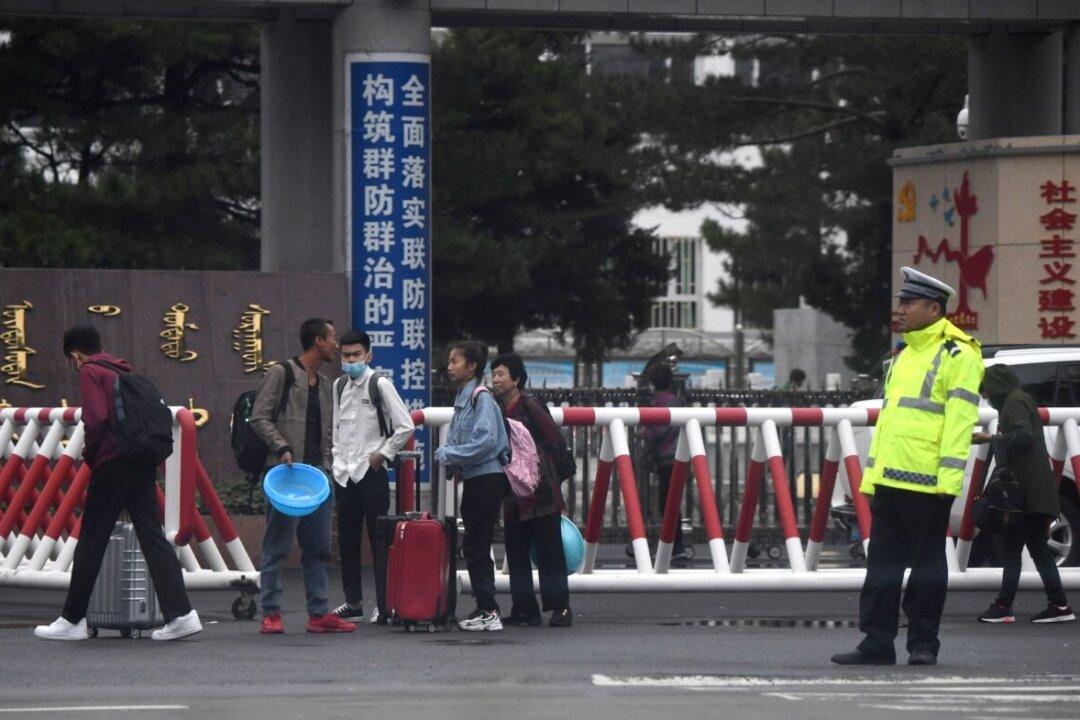A century-old Chinese primary school in Shanghai has become the focal point of a national debate on declining school places and declining birth rates, when it emerged that it had one teacher for every pupil, before finally shutting down on Sept. 1.
Sanqiao Elementary School in Shanghai’s Pudong New District, founded in 1916 during China’s Republican era, closed when the new academic year started in China on Sept. 1.
According to data from the Pudong New Area Education Bureau, for the fall semester of 2025, the public elementary school had one principal and 22 full-time teachers but only 22 students enrolled.
The 1:1 teacher-student ratio triggered heated discussion on Chinese media and social media.
The plight of Sanqiao Elementary School is not an isolated case amid the wave of mergers and closures of elementary schools and kindergartens, which started gaining attention in 2024 with the decrease of 2.61 million enrollments from the prior year.
In Shanghai alone, 54 kindergartens closed last year. Xiamen, Fujian Province, reported a decrease of 23,000 children, with 136 kindergartens closed and 1,024 full-time teachers losing their jobs—the equivalent of three kindergarten teachers leaving their jobs every day, China’s media reported.
The reason behind the wave of school closures is mostly attributed to China’s declining birth rate. According to China’s National Bureau of Statistics, in 2022, the nation’s population experienced its first negative growth in nearly 60 years, and the number of births has continued to decline. The number of births in 2023 was fewer than the number of deaths, with 9.02 million newborns and 11.1 million deaths, according to the official data. There were also 540,000 fewer newborns in 2023 than in 2022.
Wang Qi, a mainland Chinese educator using a pseudonym out of safety concerns, told The Epoch Times: “Schools with fewer students are now being merged. The main reason is that the birth rate has been declining year after year, and the population is experiencing negative growth. There are more deaths than births, and this wasn’t the case even during war times.”
He said that, amid China’s ongoing sluggish economy and high unemployment rate, “it’s remarkable if a person can support themselves without relying on their parents.”
“Most young people can’t afford to get married or to have children. If they can’t support themselves, how can they have children?” Wang said.
He said the municipal kindergarten near his home has closed down.
“Before, you had to pay extra to get your kids into this kindergarten. Now, there are no children. Many young people are reluctant to get married,” Wang said.
“People are not getting married or having children, having no money or livelihood. Then, adding to that, more people being laid off or unemployed makes the situation even worse. With all these forces combined, it’s blocked the growth of births.”

Tanggong Village Primary School in Heliao Town of Lianjiang City, Guangdong Province, also closed on Sept. 1. A parent told The Epoch Times that “the school didn’t consult parents.”
“Without their knowledge, they simply announced the merger of Tanggong Village elementary school, which had over 60 students, with another school,” the parent said.
Kindergartens were feeling the effect of China’s declining birthrate even earlier. According to data from the Chinese communist regime’s ministry of education, the two years of 2023 and 2024 saw kindergarten enrollment decrease by a combined 10.4 million.
A resident in Pudong near the Sanqiao elementary school, who didn’t give his name out of safety concerns, confirmed to the Chinese-language edition of The Epoch Times that the school was closed on Sept. 1, just one day after the school sent out a school opening notice to parents. Some parents were waiting outside the closed school, demanding an explanation. The 22 students were transferred to Jinqiao Primary School, 2.5 miles away, according to the resident.
The school served seven designated villages in the area, as Pudong New Area Education Bureau data show. According to mainland Chinese media reports, a staff member at the education bureau responded that there were only so many children of school age in the area that the school served, noting that it seemed that several school communities in the area had been relocated.






